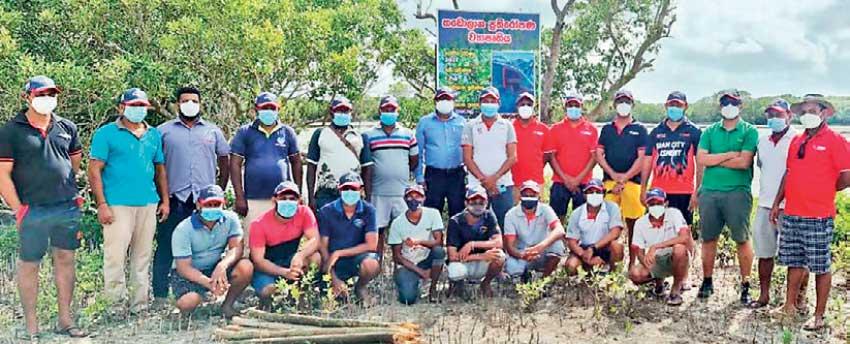Reply To:
Name - Reply Comment

Continuing with its efforts to protect and restore our environment, INSEE Cement recently kicked off its latest Mangrove Restoration Project.
This new initiative will work to restore 1 hectare of natural mangrove forest in the vicinity of the Searakkuliya Lagoon, Aruvakkaru, in the Puttalam District. Adding to INSEEs ongoing mangrove restoration projects around the Thalathuduwa and Kuruluduwa Islands of the Koggala Lake, mangrove restoration project in Aruvakkaru is a new sustainability initiative by INSEE. The initial phase of the Aruvakkaru segment of the project will see between 1,500 and 2,000 new mangrove plants being introduced to the area over a period of 1 year, along with other ecological conservation activities.
Explaining further, Organization & Human Resource Director Chandana Wijayanama said, “At INSEE, we are consistently striving to reduce our carbon footprint and mitigate the effects of climate change. Thus, we have instituted a comprehensive conservation and restoration umbrella that covers various areas of concern. The new mangrove restoration project at Aravakkaru is a part of the ‘water and biodiversity’ category of efforts of INSEE, through which we envision a restored nation that is ecologically secure. As the market leader in Sri Lanka for cement products, it is also our duty to lead the way in terms of sustainable development and conservation. In the same way that we strive for the highest standards in manufacturing, we also stand for maximum effort to safeguard our nation’s natural resources and biodiversity. Therefore, we are very proud to have launched this initiative and look forward to continuing with this project and our wider comprehensive sustainability programme in the future.”
INSEE’s environmental sustainability projects are divided under four main pillars which include restoration, conservation and rehabilitation projects for the following areas: quarry land, mangrove habitats, rainforests and coral reefs. In addition to the new mangrove restoration project, INSEE has also been involved in an ongoing assisted ecological regeneration programme, since 1999, in partnership with IUCN in 2018, INSEE undertook the restoration of a degraded area of the Kanneliya Forest buffer zone.
Despite challenges, including the global pandemic, work is ongoing and 15,000 forest plants have been introduced, an onsite nursery has been commissioned and a fire-belt has been established to mitigate the risk of forest fires.
Sensitive to the ecological impacts the oceans are facing, INSEE has also launched the Unawatuna Coral Reef Restoration project, which has seen the introduction of artificial structures to reinforce the coral bed and encourage coral propagation.
Launched in 2009, the project has since enabled the natural establishment of at least 25 new coral colonies. INSEE has involved various non-profit, governmental, non-governmental and educational institutions in these projects and collaborated with them to expand the reach and improve the success of its various sustainability and ecological protection initiatives. These institutions include the Sri Lanka Navy, Biodiversity Sri Lanka, Rotaract Clubs, the University of Moratuwa, the Habaraduwa Technical College, the IUCN and a host of other environmentalists
and volunteers.